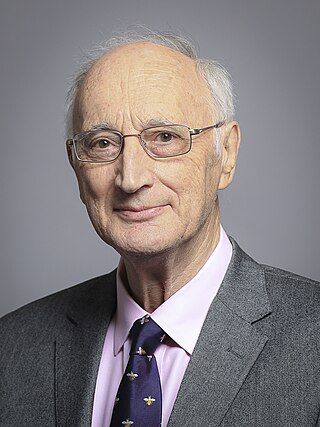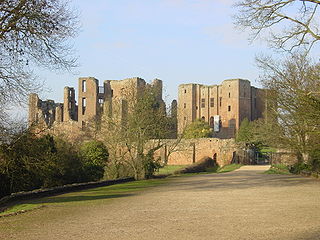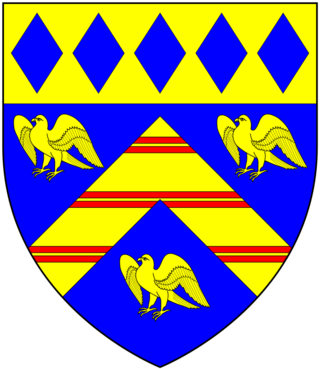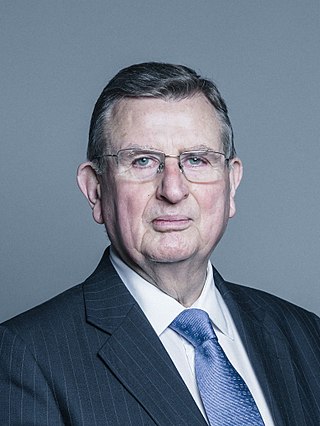Related Research Articles

Duke of Bedford is a title that has been created six times in the Peerage of England. The first and second creations came in 1414 and 1433 respectively, both in favour of Henry IV's third son, John, who later served as regent of France. He was made Earl of Kendal at the same time and was made Earl of Richmond later the same year. The titles became extinct on his death in 1435. The third creation came in 1470 in favour of George Neville, nephew of Warwick the Kingmaker. He was deprived of the title by Act of Parliament in 1478. The fourth creation came in 1478 in favour of George, the third son of Edward IV. He died the following year at the age of two. The fifth creation came in 1485 in favour of Jasper Tudor, half-brother of Henry VI and uncle of Henry VII. He had already been created Earl of Pembroke in 1452. However, as he was a Lancastrian, his title was forfeited between 1461 and 1485 during the predominance of the House of York. He regained the earldom in 1485 when his nephew Henry VII came to the throne and was elevated to the dukedom the same year. He had no legitimate children and the titles became extinct on his death in 1495.
Forms of address used in the United Kingdom are given below.

George Samuel Knatchbull Young, Baron Young of Cookham,, known as Sir George Young, 6th Baronet from 1960 to 2015, is a British Conservative Party politician who served as a Member of Parliament (MP) from 1974 to 2015, having represented Ealing Acton from 1974 to 1997 and North West Hampshire from 1997. He has served in Cabinet on three occasions: as Secretary of State for Transport from 1995 to 1997; as the Leader of the House of Commons and Lord Privy Seal from 2010 to 2012; and as Chief Whip of the House of Commons from 2012 to 2014.

John William Ponsonby, 4th Earl of Bessborough, PC, known as Viscount Duncannon from 1793 to 1844, was a British Whig politician. He was notably Home Secretary in 1834 and served as Lord Lieutenant of Ireland between 1846 and 1847, the first years of the Great Famine.

Viscount Thurso, of Ulbster in the County of Caithness, is a title in the Peerage of the United Kingdom. It was created on 11 June 1952 for the Scottish Liberal politician and former Secretary of State for Air, Sir Archibald Sinclair, 4th Baronet. His son, the second Viscount, served as Lord Lieutenant of Caithness from 1973 to 1995.
Viscount Camrose, of Hackwood Park in the County of Hampshire, is a title in the Peerage of the United Kingdom. It was created on 20 January 1941 for the prominent newspaper magnate William Berry, 1st Baron Camrose. He had previously received the award of Baronet, of Long Cross in the County of Surrey, in the Baronetage of the United Kingdom, on 4 July 1921, and was created Baron Camrose, of Long Cross in the County of Surrey, on 19 June 1929, in the Peerage of the United Kingdom. His second son, the third Viscount, disclaimed the peerages in 1995 on succeeding his elder brother. However, he had already been created a life peer as Baron Hartwell, of Peterborough Court in the City of London, on 19 January 1968. On his death in 2001 the life peerage became extinct while he was succeeded in the other titles by his eldest son, the fourth Viscount. The first three Viscounts all headed The Daily Telegraph at one point, the first having purchased it from Harry Levy-Lawson, 1st Viscount Burnham, but in the 1980s they lost control to Conrad Black.

Baron Glentoran, of Ballyalloly in the County of Down, is a title in the Peerage of the United Kingdom. It was created on 8 July 1939 for the Unionist politician Herbert Dixon. In 1950 he also succeeded his elder brother as third Baronet, of Ballymenock. His son, the second Baron, was also a politician and served as the last Speaker of the Senate of Northern Ireland. As of 2017 the titles are held by the latter's son, the third Baron, who succeeded in 1995. He is a former Olympic bobsleigh gold medallist as well as a soldier, businessman and politician. Lord Glentoran was one of the ninety elected hereditary peers who remain in the House of Lords after the passing of the House of Lords Act 1999, and sat on the Conservative benches until his June 2018 retirement under the House of Lords Reform Act 2014.

Baron Kenilworth, of Kenilworth in the County of Warwick, is a title in the Peerage of the United Kingdom. It was created in 1937 for the motor industry magnate Sir John Siddeley. His grandson, the third Baron, was an interior designer and the founder of John Siddeley International Ltd. As of 2010 the title is held by the latter's son, the fourth Baron, who succeeded in 1981.
Baron Silkin, of Dulwich in the County of London, is a title in the Peerage of the United Kingdom. It was created on 4 July 1950 for the solicitor and Labour politician Lewis Silkin. The peerage was disclaimed by both his eldest son, the second Baron, and the latter's nephew, the third Baron. When the third Baron disclaimed the title in 2002, the barony of Silkin became the first peerage ever to be disclaimed twice; and the only disclaimer since the House of Lords Act 1999
Baron Bridges, of Headley in the County of Surrey and of Saint Nicholas at Wade in the County of Kent, is a title in the Peerage of the United Kingdom. It was created on 4 February 1957 for the prominent civil servant Sir Edward Bridges. He was Cabinet Secretary from 1938 to 1946. He was succeeded by his son, the second Baron, in 1969. He notably served as British Ambassador to Italy from 1983 to 1987. Lord Bridges was one of the ninety-two elected hereditary peers that remained in the House of Lords after the passing of the House of Lords Act 1999, before his removal for non-attendance in 2016. As of 2017 the title is held by his son, the third Baron, who succeeded to the title in that year. He was the solicitor to, among others, Queen Elizabeth II and other members of the royal family.

Baron Roborough, of Maristow in the County of Devon, is a title in the Peerage of the United Kingdom. It was created on 24 January 1938 for Sir Henry Lopes, 4th Baronet. He had earlier represented Grantham, Lincolnshire, in Parliament as a Conservative. The Baronetcy, of Maristow House in the County of Devon, had been created in the Baronetage of the United Kingdom on 1 November 1805 for Manasseh Masseh Lopes, a member of a wealthy family of Portuguese Jewish origin, with special remainder to his nephew Ralph Franco, son of his sister Maria. Manasseh Masseh Lopes converted to Christianity in 1802, and later represented Evesham, in Worcestershire, Barnstaple in Devon, and Westbury in Somerset, in Parliament. However, in 1819 he was twice convicted of bribing the voters in both Barnstaple and Grampound in order to be elected to Parliament, and was sentenced to imprisonment and heavy fines. He was also unseated by the House of Commons, but after his release from prison he nonetheless got elected for Westbury, a pocket borough which he controlled to a great extent.

Peter Spencer Bowness, Baron Bowness, is a British politician, solicitor, and life peer. Since 1996, he has been a member of the House of Lords.

John Davenport Siddeley, 1st Baron Kenilworth, was a pioneer of the motor industry in the United Kingdom, manufacturing aero engines and airframes as well as motor vehicles.

Richard Kidston Law, 1st Baron Coleraine, was a British Conservative politician.

Timothy John Edward Tollemache, 5th Baron Tollemache is an English peer and landowner. He is the eldest son of Major John Edward Hamilton Tollemache, 4th Baron Tollemache (1910–1975), and his wife, Dinah Jamieson. He succeeded his father as Baron Tollemache in 1975 and is the current owner of Helmingham Hall in Suffolk, the principal seat of the Tollemache family.
Richard William Brinsley Norton, 8th Baron Grantley, is a retired banker and politician. In early life he worked for the Conservative Party, but joined the UK Independence Party (UKIP) when it was founded in 1993. As Richard Grantley, he was a member of the House of Lords from 1995 to 1999.
George Neville Clive Wigram, 2nd Baron Wigram, MC, DL was a British Army officer. He was a Member of the House of Lords before his exclusion in 1999, due to the House of Lords Act 1999 which excluded most members who inherited their seats. He sat as a Conservative.

Jeffrey Richard de Corban Evans, 4th Baron Mountevans,, is a British hereditary peer and shipbroker, who served as Lord Mayor of London from 2015 to 2016.
Quentin Gerard Carew Wallop, 10th Earl of Portsmouth,, styled Viscount Lymington in 1984, is a British peer and current head of the Wallop family.
John Ailwyn Fellowes, 4th Baron de Ramsey,, is a British landowner, agriculturalist, and the first chairman of the Environment Agency.
References
- ↑ "The Rt Hon the Lord Kenilworth Authorised Biography - Debrett's People of Today". Debretts.com. Retrieved 16 February 2015.
- ↑ "Randle Siddeley - Randle Siddeley". Randlesiddeley.co.uk. Retrieved 16 February 2015.
- ↑ Burke's Peerage. 1999.
